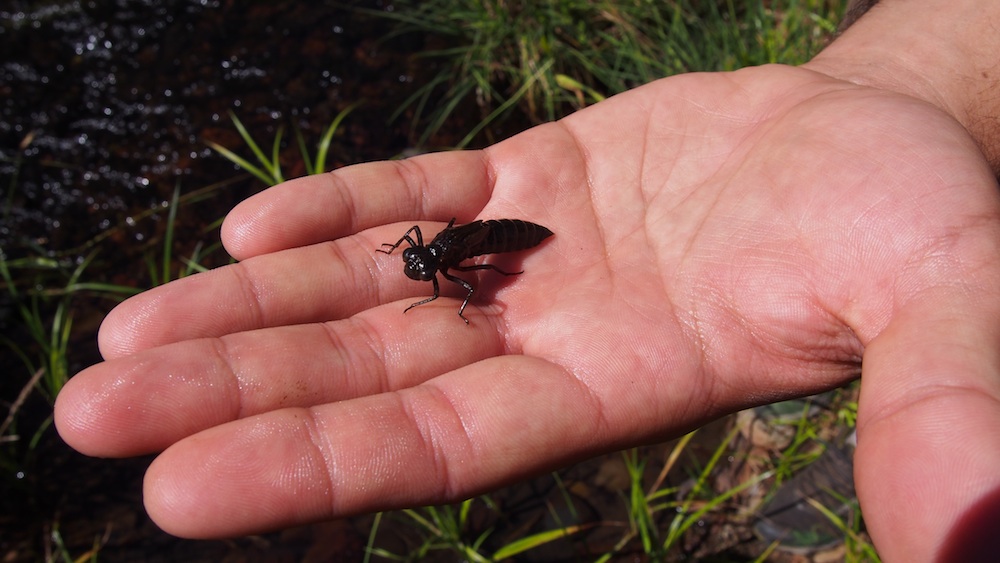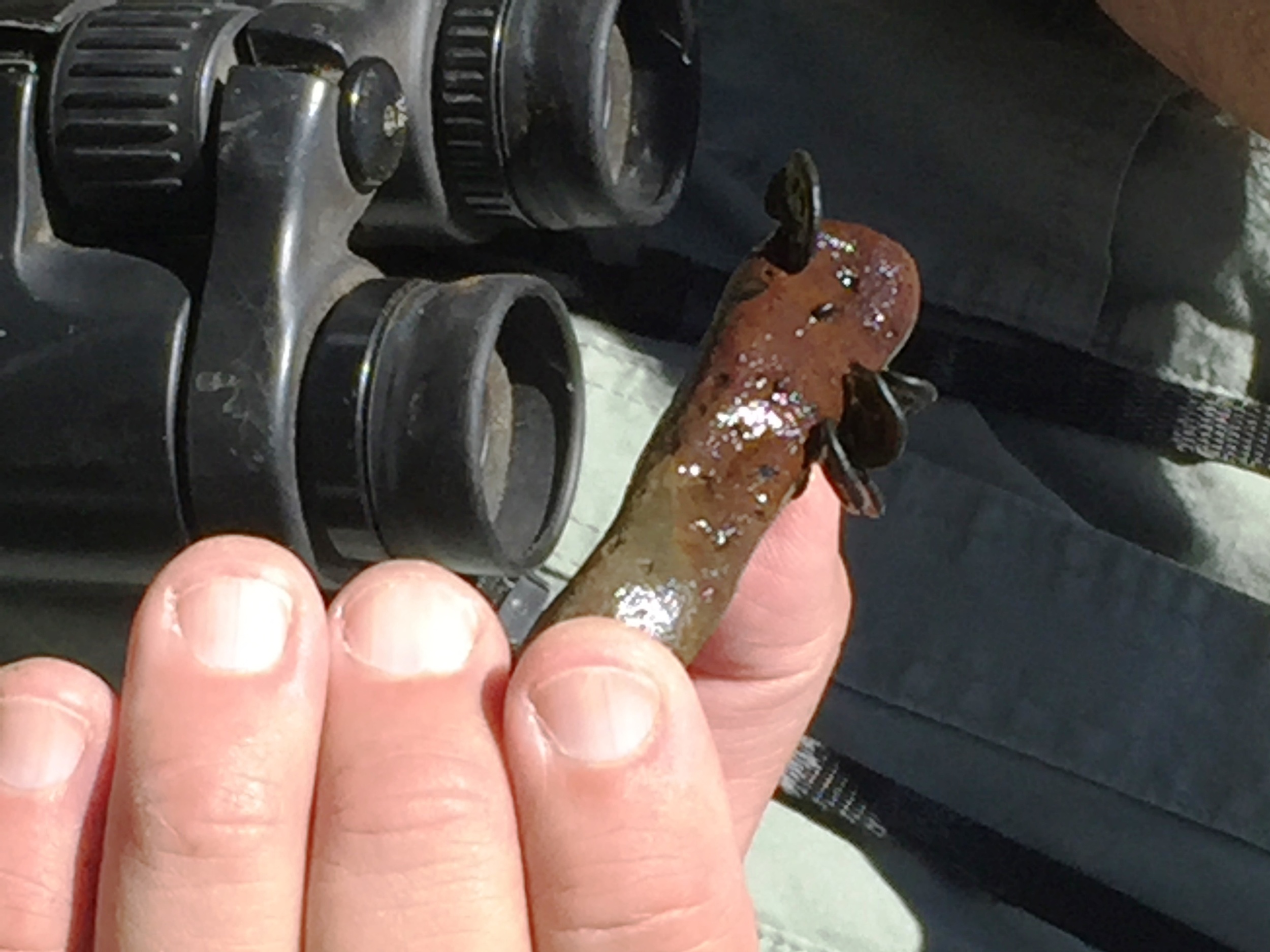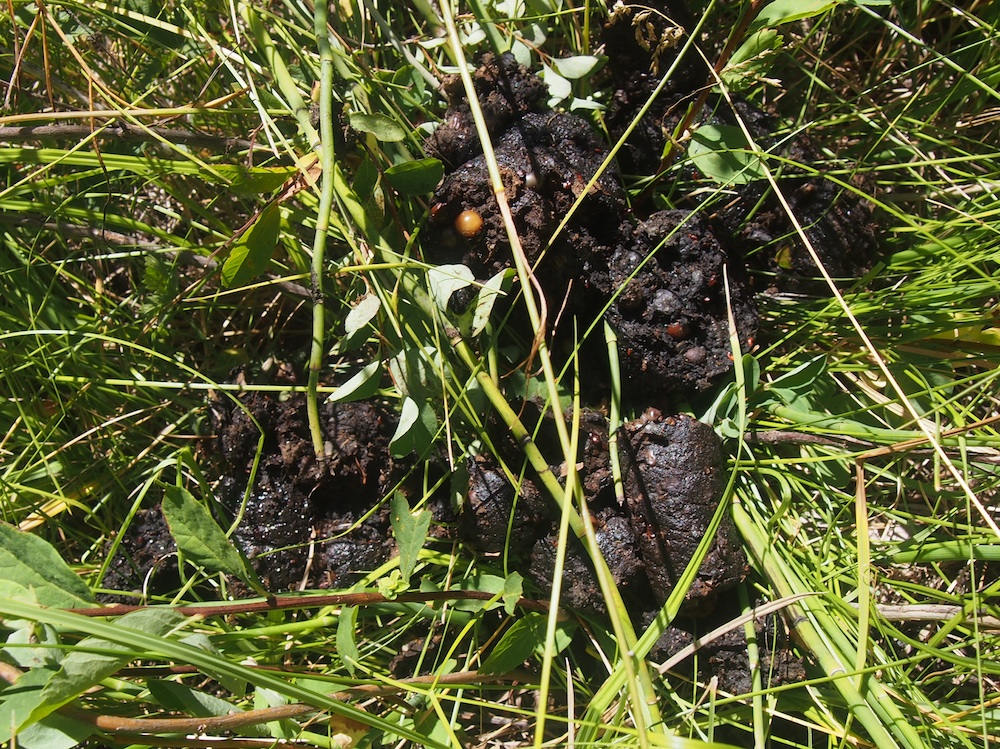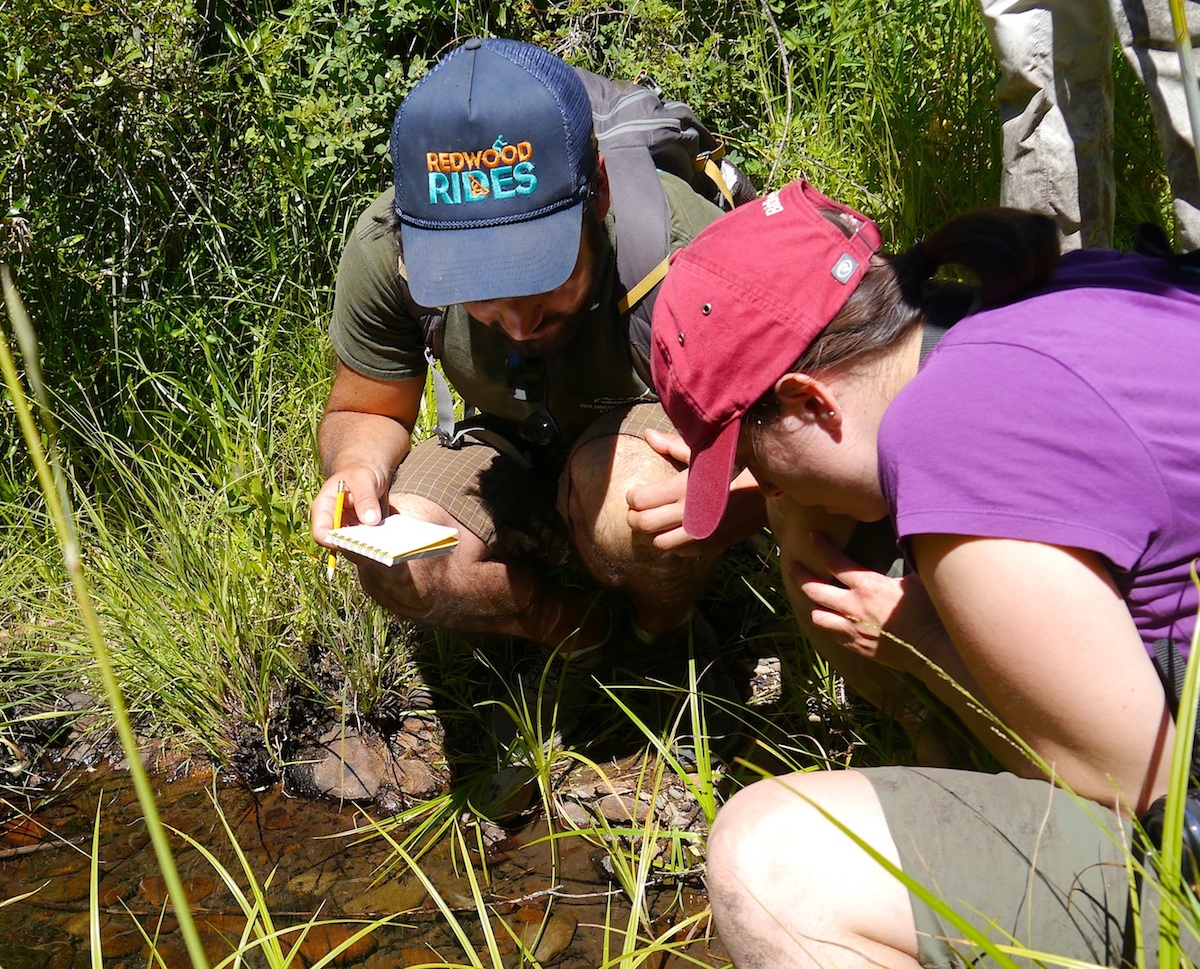The group follows Michael Parker down into Fredenburg Meadow to search for a beaver dam. see the 3-MILLION YEAR OLD LAVA FLOW at the upper left. K Boehnlein photo
Michael Parker tells about the 'sponge' as participants stand on a now-empty beaver dam. K Boehnlein photo
A hot summer day in the Bear Creek Valley inevitably means that the forests of the Cascade-Siskiyou National Monument become needed respite. This month, we had the pleasure of following SOU Biology Department chair, aquatic ecologist, and expert bushwhacker Michael Parker into the woods and off trail in search of clues about the ultimate “ecosystem engineer”: the American Beaver.
Our adventure began at Tub Springs Wayside, where we consolidated cars and continued down Highway 66 to Jenny Creek Road. We wound our way past corporate timberlands piled high with harvested timber, eerily resembling the piles of wood that beavers themselves collect to make their homes. But just beyond timber lands lies the Monument boundary, an immediate return to the peace of an intact forest. Just after crossing Jenny Creek, we parked and walked west along Forest Service Road 39-4E-23.3 which borders Jenny Creek. From our high vantage point, we could see the willow, cattails, rushes, and Spirea that flock to wet channels, a line of darker green against midsummer grass. This marshy grassland that used to be home to cattle grazing is called Fredenburg Meadow, a unique wet meadow gets its wetness from Jenny Creek and Fredenburg Springs.
This was the site of our first beaver dam! Beavers haven’t occupied Fredenburg Meadow and Jenny Creek for a few years now, but their dam remains, hidden beneath willow roots and cattails. Participants picked their way through soggy ground and water-loving vegetation to stand on top of the now-empty beaver dam, an innocuous conglomeration of sticks and mud cut out of the land. One by one, participants disappeared into the wall of green that surrounded the dam, emerging victorious and awed to be standing on a former home built with mostly alder boughs. We could now see that the oasis of green that we had seen from above was actually an earthy sponge, formed from years of sediment accumulation from Jenny Creek and Fredenburg Springs, kept wet by spring runoff and held in place by plant roots. In less than 10 years, the meadow has been transformed from over-grazed grassland into a productive wetland, home to amphibians, insects, fish, seasonal elk, and sometimes…beavers.
We viewed a parsnip lake from afar. Dr. parker didn't want us to contaminate the lake, where the spotted frog breeds. tpdickey photo.
After a filling lunch under the cooling gaze of old growth Douglas Fir boughs just up Jenny Creek Road from our cars, we headed to our second destination: The Parsnip Lakes. The group was delighted to visit the lakes, a favorite spot of Michael Parker’s. In 2003, Michael and some of his biology students discovered a population of the endangered Oregon Spotted Frog at these lakes, a species then believed to be extinct from Southern Oregon. We learned that this special population has beavers to thank for their wet home. A family of beavers formed this landscape years ago, now covered in standing water and yellow pond lilies, by damming one of the springs that feeds the lakes. Even though the beavers have now left, their dam remains as an overwintering spot for the frogs, who seek out areas that do not freeze to survive the cold months.
There are stories inherent in any landscape. We just need the opportunity or guiding tutelage in order to find them. Michael Parker led our group of excited learners to discovering the American beaver as a subtle catalyst for landscape change. They move with the ever-changing mosaic of shifting water, which goes where it flows year after year. In the process of carving out homes for themselves out of alder sticks and mud, they nibble on willows and re-engineer the landscape. Often, this means wetter, more fertile ground for vegetation, amphibians, and other water-loving creatures to thrive!
by Katie Boehnlein, Hike and Learn 2016 Coordinator
View photos from the hike. To view caption text, hover over the photo. All photos by Katie Boehnlein, except where noted.
